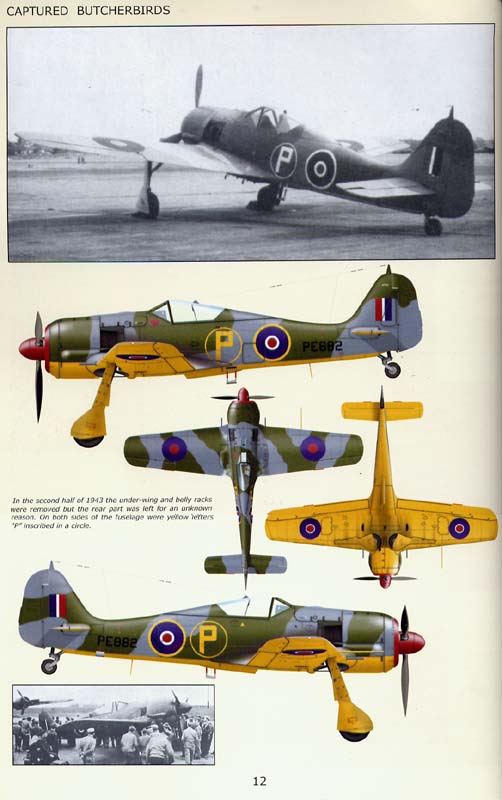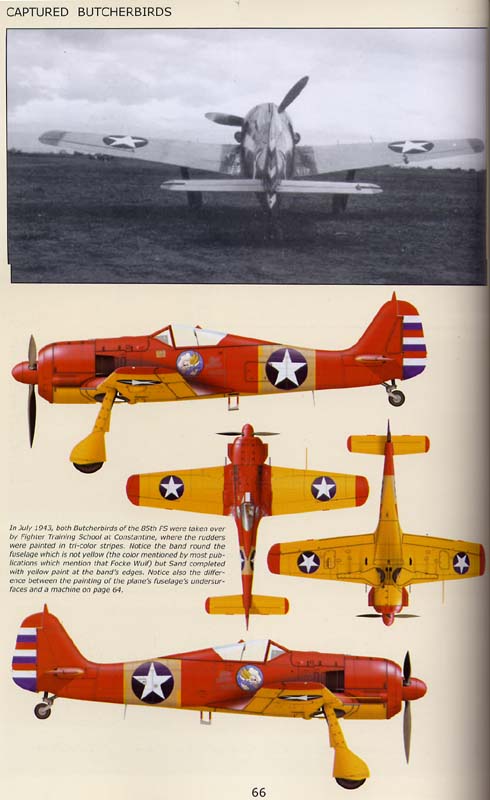Authors: Jacek Jackiewicz & Robert Bock
Publisher: Atelier Kecay
ISBN: 978-83-924914-2-2
Binding: Softbound
Pages: 120
The Focke-Wulf FW190 Wurger (“Butcherbird”) was to German combat planes of the Second World War what the Junkers Ju-88 was to German bombers: a sturdy platform capable of seemingly limitless potential. Kurt Tank’s Wurger underwent constant development during the War. The superlative FW190D and Ta-152 were the penultimate variants. They entered combat at the end of the war, but their excellent qualities did little to change the course of events. The FW190 served primarily in the fighter and fighter/bomber roles and it flew in every European theatre of the conflict and in North Africa as well. The Allies also “appreciated” the abilities of the FW190. They made the capture of one a high priority, in order to assess its strengths and weaknesses, and to develop combat tactics against it. The Spitfire Mk.IX is one result of the RAF’s examination of captured FW190s, which were superior in most respects to the Spitfire Mk.V.

Jacek Jackiewicz and Robert Bock’s new book examines the fate of the FW190s captured by the Allies. The thoroughness of their research is reflected by the book’s inside cover. It contains a list of FW190s captured by the British and Americans. The list includes the date and location of each aircraft’s capture, the aircraft variant (FW190A-8, for example), Werknummer, the plane’s original markings (“Black 13”), and finally the new markings of the plane and the new owner’s identity.
The book is divided into three informal sections. The first section illustrates FW190s captured by the British and evaluated by the RAE (Royal Aircraft Establishment) and the Central Fighter Establishment. The US Army Air Force and US Navy captured a number of FW190s and these are described in the second section. The third section describes “unauthorized” captured Allied planes (squadron “hacks” and the like) in both US and RAF colors.
17 “RAF” FW190s are depicted in the first section. It includes numerous pictures of each plane (when available, of course) and a series of color profiles of these planes in both their original and captured markings. The second section on US FW190s follows the same format. The “unauthorized” captures of the third section are the planes that grabbed my attention, and I suspect these will also attract most Luftwaffe fans. These are some of the most colorful warplanes I have ever seen and they remind me of the pre-War “Yellow Wings” period of the early USAAF. A good example is one of two FW190s with unknown Werknummers captured in Tunisia and repainted by the 85th FS/79thFG (see page 66). This FW190A-5 was later flown by the Fighter Training School at Constantine, Algeria and is an excellent example of a gaudy aircraft. Its final camouflage consisted of an overall red fuselage with yellow lower cowl and fuselage band, tricolor rudder, and yellow wings with red tips!

There are more than fifty different FW190 profiles in this section. I have seen many of the photographs before, but not so many contained in one book. The science of interpreting black and white photographs, and in turn describing the actual colors used to paint these planes, has improved tremendously in the last 15 years. With this is mind it is nice to see new color profiles of planes that differ significantly, in some cases, with profiles published in earlier books. For example, Ta-152s were thought to have been painted in RLM 82/83, the so-called “Late War” colors. Current research confirms this. I found a photograph in this book, which I hadn’t seen before, which apparently shows an upper wing camouflage pattern of RLM 75/83 (see pages 23 and.23) in conjunction with an upper fuselage pattern of 82/83. This aircraft, “Green 9” of Stab./JG301, was a Ta-152H-1, W.Nr 150168 captured by the Allies at Leck Airfield in May 1945.
One of the most interesting aspects of this book is the nature of the color profiles: if the aircraft is incomplete in the known photographs, then so is the profile! This differs significantly from most other color profiles. JaPo Publications adopted this approach in their first Messerschmitt Bf109K monograph but it was confined to smaller, black and white line drawings rather than full color illustrations. Jackiewicz and Bock leave it to the reader to “fill in the blanks” and this is a bold and refreshing approach, albeit frustrating to those who like to build models based on pictures of complete aircraft, taken from all possible angles!
This book is highly recommended for fans of captured warplanes in general, and for Luftwaffe fans in particular. You will find hours of inspiration for new projects in this book, and it is worth every penny. I bought several FW190 kits right after I read it. Now, where’s that Eduard 1/48th scale FW190F-8?
My thanks to Atelier Kecay for the review sample. Kecay books are available in North America from Air Connection.